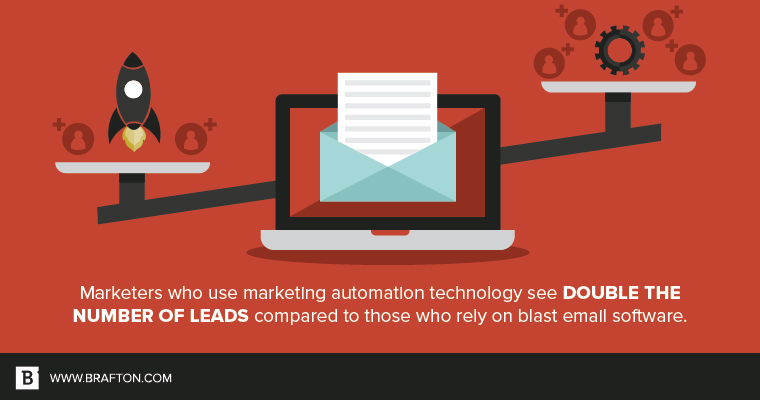By Lee Hsieh, Digital Marketing Senior Manager at AIG
Some marketing lessons never go out of style.
Case in point: Effective storytelling remains a cornerstone of any successful content marketing strategy. That said, in order to fully leverage the power of storytelling and maximize results, it is essential to ensure the technology you use is integrated to support your messaging quickly and continually.
Enter marketing automation technology.
Age of automation
Even the greatest storytelling is rendered useless if it falls on deaf ears. In order to drive results for your marketing campaign, you must ensure your messaging consistently reaches your audience in a timely manner.
Fortunately, today’s technology makes it easy to accomplish this.
Data shows a majority of businesses either use a marketing automation platform or are in the process of implementing one, with marketing technology spend now surpassing advertising spend.
And why the big push for automation? Because this technology supports lead nurturing, and nurturing translates to sales.
Business-to-business marketers cite the ability to generate more and higher-quality leads as the No. 1 benefit of utilizing marketing automation technology, with those that use it seeing double the number of leads compared to those that rely on email blast software.
However, it is not enough to invest in technology and expect sales to come pouring in. Effectively combining marketing automation and storytelling requires care and attention.
Transforming technique
In order to implement an effective content distribution strategy, you have to undertake a radical shift in thinking about how you approach storytelling. Numerous factors have to be hashed out and agreed upon, including channels, voice and tonality.
Creating a full-scope content marketing strategy requires substantial time allocated toward anticipating content needs. Even after you agree on a distribution channel, you have to consider format. Will the content take the form of an eBook or a microsite? Will a form fill be required? Taking short cuts and failing to give these elements careful consideration can negatively affect success.

5 keys to success
If you want to successfully utilize storytelling in the age of automation, keep the following five factors in mind:
1. Customer journey and persona mapping are integral to ensure you are speaking to the right person at the right time in your marketing campaign.
From my experience, bottlenecks and pain points are typically good places to begin a conversation with prospects. There is a problem there, and a prospect will pay attention if they believe you can provide them with a solution.
You cannot pay lip service to sales and marketing alignment. There must be balance between the two. Sales knows the prospects better than anyone. We must put on our sales hats and work alongside sales teams to understand what their typical clients look like, how can we move up the value chain, who the influencers are, etc.
We must produce content to help sales move the prospect along the buyer’s journey.
2. Do not just collect data, use it to inform your strategy.
I know it may sound cliché, but utilizing data analytics to review past campaigns is the most effective way of determining future initiatives. Challenge the status quo, do not hesitate in trying channels that may work for business-to-consumer companies but did not traditionally work for B2B. Adoption changes so rapidly, what may have failed three-to-six months ago may now be a success.
3. Think like a publisher, not a salesperson.
You have to provide value to customers through your content, not push a hard sale for your goods and services.
Campaigns with the highest failure rates are efforts that focus solely on your capabilities. Subject lines are the sizzle in emails, but you need to add value. That is what content can do for your organization. You can use storytelling to capture audience attention, demonstrate your expertise and provide a solution to prospects’ pain points, all without making them feel like you are selling them.
Thought leadership is the anchor. Strong, sound, well-researched content enables you to tell your company’s story in a non-partisan manner. Segment that content based on persona, channel, device, time of utilization, etc.
4. Do not hesitate to simplify.
Marketing automation is meant to make your life easier, not more complicated.
I find that marketers sometimes become so entrenched in the logic of marketing automation that they lose focus of what they are trying to do. For new business, it is telling a story to strangers to get them to act on a suggestion. For current clients, it is reaffirming that they made the right choice, or providing them additional value they may not have found useful during the initial buyer’s journey.
Marketing automation is the tool. People on the other end do not change because you are programming a logic path for them. Do not over-complicate to the point of paralysis. There is no perfect campaign (unless you count the ones that bring in substantial revenue).
5. Test, test, test.
You may think you know what works well, but only data will truly show you.
Will you reach your target audience on Twitter? Maybe your assumption is no, but unless you have empirical data that shows this channel is not effective, you should explore the idea and find out.
Failure is how you learn. You must dust yourself off, understand where you fell short and try again. One of our greatest challenges was recognizing our own biases. What we thought would work well was not always the case. As we built out our strategy and implemented our campaigns, we were able to measure our performance to determine what campaigns actually worked.
At the end of the day, engagement is what you are looking for – click throughs, opens, forwards, etc. Marketing automation enables you to tell your story to a wide, but focused, audience, as well as measure your success through data analytics. You can optimize in near- real time as you are telling your story.
Just remember your content is key to making it all work. Weak, irrelevant or boring promotional content will cause you to lose a prospect’s attention. You go from trusted advisor to boring uncle at Thanksgiving who tells the same story every year in an instant.
Before you launch your next campaign, make sure what you are saying is worth hearing.





